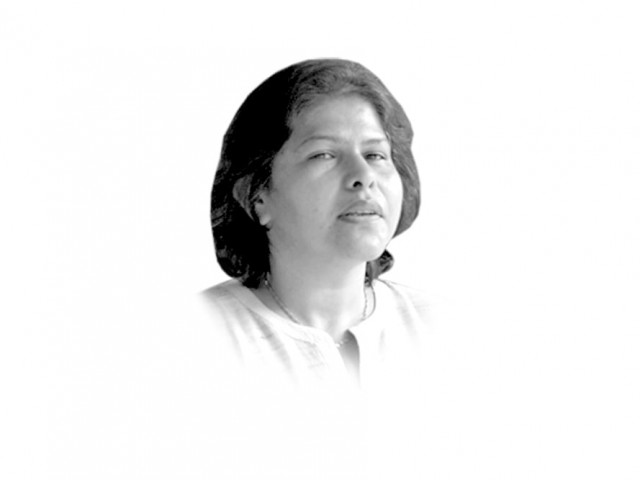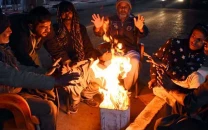The end of Pak Tea House
When we talk of the Pak Tea House, it is about the intellectual depth of the city.

The writer is an independent social scientist and author of Military Inc.
It is not possible to recreate the magic because the people, their attitudes and the circumstances in which literature used to happen then, as compared with how it takes place now, have changed. To begin with, the breed of writers is different now. Those that livened up the place once did not have a lot of material entrapments and so it was possible to take a lift with someone to the Mall or even take a rickshaw or taxi. Like a lot of other things in this country, the shift of attitude of the writers and intellectuals is also linked with General Ziaul Haq. As plots, cars and positions were distributed, it brought a gradual end to the darweshi of the fiction writer and the poet. The intellectual competition no longer remained that but had material dimensions as well.
When we talk of the Pak Tea House, it is about the intellectual depth of the city. This was a place where the intellectual left met the right and had decent but meaningful conversations. There were always three to four intellectual groups, which then slowly changed into mafias. But then, not everything can be blamed on Zia. There were other critical developments, such as the growing chasm between the native Urdu writer and the non-native, who over the years, produced better literature but was ignored for political reasons. This problem was more acute in Lahore as compared with Sindh because Punjab did reach out to accepting Urdu with greater excitement. However, if the judgment was made on the basis of ethnicity and not the quality of literature, then it surely got frustrating and confusing. Therefore, it is a combination of reasons that people in Lahore seem to be forgetting great names like Jamila Hashmi, Muneer Niazi, Majeed Amjad, Umme Ammara, Mukhtar Masood, Imtiaz Ali Taj, Hijab Imtiaz Ali and many others.
This is really the end of intellectual history for Lahore that no one amongst the present generation even knows of what a vibrant place the Urdu Bazaar used to be or the characters who oiled the intellectual machine. People like Mohammad Tufail of Naqoosh Press, who was not just a publisher but very deeply a part of the intellectual scene, often engaged writers in conversations and ideas. Also, the conversations that were left unfinished would happen elsewhere. There were smaller groups that competed but produced. The same time that the Pak Tea House was closed around the mid-1990s was also when intellectual life began to change and the groups that were earlier based on ideas turned into mafias. However, this was also a watershed moment for literature in Punjab, and especially Lahore, in that the language began to change. English slowly started to dominate and the literature festivals are a reminder of how this is actually the end of the Pak Tea House.
It was great to have a literature festival in Lahore. But it also made one wonder about its capacity to connect with plural traditions in terms of language, culture and historical legacy. For one, there was no discussion of Punjabi or Seraiki literatures — two languages that dominate Punjab. Furthermore, there is very rich fiction and poetry being produced in these languages that would enrich the crowds at any festival. But perhaps, the corporate world that seems to have now taken over literature and literary festivals is all about numbers and glitter.
The majority of attendees of the festival were people who had little idea of the richness of the city and its literary scene. Sadly, there was no effort made to connect with a lot of those who are part of the city’s intellectual legacy. A lot of writers, who have produced exciting fiction on exciting and deeply political issues, like the 1971 debacle, were not even invited to attend. Perhaps, this was because a lot of these names are not visible to the English-speaking world or have not been taken over by the corporate universe. Unfortunately, literature, art and culture have to now conform to the Coke Studio standard to remain relevant or attract attention. This is certainly a different age.
Once upon a time and not too long ago, Lahore’s literary life lived its ideas and literature. Habib Jalib was not just supposed to be sung at all odd hours by the strangest of people but imagined in real life. There was a deeper politics behind the words, which made Faiz or Manto much more real than the present-day presentation by the corporate world. Now, we tend to recite their poetry and read their fiction without understanding the spiritual and intellectual journey behind the words. Surely, all of this is partly natural and part of some change. However, it is a sad fact when intellectuals are brought down to the level of popular brands with little interest in the real spirit behind the ideas. No wonder, we are so fond of singing and reciting Faiz Ahmed Faiz’s “Hum dekhein gey” but fail to ever bring those words to life. More important, every society needs a handshake between ages. This is not about comparative wisdom but about learning and keeping the secret of ones’ culture intact. I wonder if we realise that the end of the Pak Tea House is not about closing down of a shop. It is symbolic of closing down of a window to a rich legacy of art and literature.
Published in The Express Tribune, March 7th, 2013.













COMMENTS
Comments are moderated and generally will be posted if they are on-topic and not abusive.
For more information, please see our Comments FAQ